Agenda
Click HERE to view the agenda in real time
DAY 1: Wednesday, December 3
| 7:00 – 8:00 a.m. | Registration check-in and Breakfast |
| 8:00 - 8:05 a.m. | Welcome Remarks Christoph Schmitt, Nature Metabolism |
| 8:05 – 8:30 a.m. | Opening Talk Sir Edward Byrne, President of KAUST |
| SESSION I: Glia-neuron metabolic interactions | |
| 8:30 – 9:00 a.m. | Lactate in the brain: from metabolic end-product to energy substrate and signalling molecule Pierre Magistretti (KAUST, Saudi Arabia) |
| 9:00 - 9:30 a.m. | Mitochondria in neuron-astrocyte metabolic coupling: powering or signaling? Juan Bolanos (University of Salamanca, Spain) |
| 9:30 - 10:00 a.m. | Glial metabolism and the maintenance of axonal integrity Aiman Saab (University of Zurich, Switzerland) |
| 10:00 - 10:30 a.m. | L-Serine: A critical amino acid for learning and memory in health and disease Gilles Bonvento (University of Paris-Saclay, France) |
| 10:30 – 11:00 a.m. | Coffee Break |
| 11:00 - 11:30 a.m. | Energizing neurons: unfolding metabolic and mitochondrial plasticity mechanisms Gulcin Pekkurnaz (UC San Diego, USA) |
| 11:30 - 12:00 p.m. | Imaging the flexibility of brain energy metabolism Bruno Weber (University of Zurich, Switzerland) |
| 12:00 - 12:30 p.m. | One carbon metabolism in reprogramming and tactics to achieve cellular rejuvenation Reyna Hernandez-Benitez (Altos Labs, USA) |
| 12:30 - 1:00 p.m. | Linking neurogliaform cell function to insulin signaling in the brain Leena Ibrahim (KAUST, Saudi Arabia) |
| 1:00 - 2:30 p.m. | Lunch |
| SESSION II: Metabolic flexibility of glial cells | |
| 2:30 - 3:00 p.m. | Oligodendrocytes in brain energy metabolism and Alzheimer‘s disease Klaus-Armin Nave (Max Planck Institute, Germany) |
| 3:00 - 3:30 p.m. | Towards understanding brain ketone body metabolism Gesine Saher (Max Planck Institute, Germany) |
| 3:30 - 4:00 p.m. | Lactate as a neuronal energetic fuel and beyond Anne-Karine Bouzier Sore (University of Bordeaux, France) |
| 4:00 - 4:10 p.m. | SHORT TALK: Gliapharm's astrocyte-targeted therapeutic approach to restore brain energy metabolism in neurological diseases Charles Finsterwald (Gliapharm, Switzerland) |
| 4:10 - 4:40 p.m. | Coffee Break |
| 4:40 - 5:10 p.m. | Metabolic flexibility of the drosophila nervous system Stefanie Schirmeier (Dresden Technical University, Germany) |
| 5:10 - 5:40 p.m. | Restoring cell health and reversing disease by cellular rejuvenation Juan C. Izpisua Belmonte (Altos Labs, USA) |
DAY 2: Thursday, December 4
| 7:30 – 8:30 a.m. | Registration check-in and Breakfast |
| SESSION III: The role of glial metabolism in higher-order brain functions and disease | |
| 8:30 – 9:00 a.m. | Astrocyte cannabinoid receptors: a link between energy metabolism and synaptic signalling Giovanni Mariscano (University of Bordeaux, France) |
| 9:00 - 9:30 a.m. | Astrocytic lipid metabolism governs brain repair and functional recovery after stroke Ángeles Almeida (Consejo Superior de Investigaciones Científicas (CSIC) and University of Salamanca, Spain) |
| 9:30 - 9:40 a.m. | SHORT TALK Disrupted glycogen metabolism in astrocytes and neurons: a metabolic link to epilepsy and neurodegeneration Jordi Duran (IQS Barcelona - Universitat Ramon Llull) |
| 9:40 - 9:50 a.m. | SHORT TALK Phospholipase A1 isoform DDHD2 supports synaptic plasticity by controlling mitochondrial β-Oxidation and protein lipidation Saber Hassan Abdelkader (Queensland Brain Institute, The University of Queensland, Australia) |
| 9:50 - 10:40 a.m. | Coffee Break |
| 10:40 - 11:10 a.m. | Brain energy and emotional drive: Mitochondrial mechanisms linking anxiety and motivation Carmen Sandi (EPFL, Switzerland) |
| 11:10 - 11:40 a.m. | Molecular alterations of the vasculature-astrocyte interactions in dementia Blanca Diaz Castro (University of Edinburgh, UK) |
| 11:40 - 12:10 p.m. | Metabolic maps of the developing mouse brain Joshua Rabinowitz (Princeton University, USA) |
| 12:10 - 12:20 p.m. | SHORT TALK Lactate enhances brain resilience in a mouse model of Alzheimer’s disease Imen Belhaj (University of Oslo, Norway) |
| 12:20 - 1:30 p.m. | Lunch |
| SESSION IV: Metabolic interactions between the brain and the periphery | |
| 1:30 - 2:00 p.m. | Well-aging and the tanycytic control of health Vincent Prevot (INSERM Lille, France) |
| 2:00 - 2:30 p.m. | Brain nutrient sensing in metabolism regulation Sabrina Diano (Columbia University, USA) |
| 2:30 - 3:00 p.m. | Central regulation of energy and glucose homeostasis by brain-derived neurotrophic factor Maribel Rios (Tufts University, USA) |
| 3:00 - 3:10 p.m. | SHORT TALK The passage of glucose uptake from the blood to the brain: answering a long-standing question with short-lived fluorescence Rachel Meister (University of Zurich, Switzerland) |
| 3:10 - 3:40 p.m. | Coffee Break |
| 3:40 - 4:10 p.m. | Hypothalamic astrocytes play a key role in body-brain metabolic interactions Cristina García-Cáceres (Helmholtz Munich, Germany) |
| 4:10 - 4:40 p.m. | Mitochondrial function in dopaminergic neurons and microglia Navdeep Chandel (Northwestern, USA) |
| 4:40 - 5:10 p.m. | Lactate shuttles and body carbohydrate carbon flow George Brooks (University of California, Berkeley, USA) |
| 5:10 - 6:10 p.m. | Poster Session |
| 6:10 p.m. | Gala Dinner |
DAY 3: Friday, December 5
| SESSION V: Emerging technologies | |
| 2:00 – 2:30 p.m. | A mitochondrial energy vent L. Felipe Barros (CECs & San Sebastián University, Chile) |
| 2:30 – 3:00 p.m. | Visualizing pentose phosphate pathway dynamics using genetically encoded fluorescent indicators Alejandro S. Martín (San Sebastián University, Chile) |
| 3:00 - 3:30 p.m. | Human brain metabolism in relation to asymptomatic Alzheimer disease and cerebral small vessel disease Manu Goyal (WashU, USA) |
| 3:30 - 4:00 p.m. | General Discussion & Closing Remarks |
Times are displayed in GMT
-
Available On Demand
Confirmed Speakers
 Aiman Saab University of Zürich, SwitzerlandAiman Saab is an SNSF Eccellenza Professor at the University of Zurich, investigating neuron–glia interactions, axon–glia communication, and metabolic resilience in the nervous system. His research has advanced understanding of how astrocytes and oligodendrocytes support brain energy metabolism, synaptic function, and long-term axonal health. He earned his PhD in Neurobiology from the University of Saarland and trained at the Max Planck Institute for Experimental Medicine and the University of Zurich. He established his lab with support from the Cloëtta Foundation, the SNSF Eccellenza Professorial Fellowship, and most recently, the SNSF Consolidator Grant.
Aiman Saab University of Zürich, SwitzerlandAiman Saab is an SNSF Eccellenza Professor at the University of Zurich, investigating neuron–glia interactions, axon–glia communication, and metabolic resilience in the nervous system. His research has advanced understanding of how astrocytes and oligodendrocytes support brain energy metabolism, synaptic function, and long-term axonal health. He earned his PhD in Neurobiology from the University of Saarland and trained at the Max Planck Institute for Experimental Medicine and the University of Zurich. He established his lab with support from the Cloëtta Foundation, the SNSF Eccellenza Professorial Fellowship, and most recently, the SNSF Consolidator Grant. Alejandro San Martín Universidad San Sebastián, ChileDr Alejandro San Martín is an Associate Professor and Principal Investigator at the Centro de Estudios Científicos and Universidad San Sebastián, Chile. His research integrates protein engineering, fluorescence microscopy, and optogenetics to interrogate cellular energy metabolism in real time. He pioneered the development of the first genetically encoded fluorescent biosensors for pyruvate (Pyronic and PyronicSF), lactate (Laconic and CanlonicSF), and the lactate-to-pyruvate ratio (Lapronic); these tools are now widely employed to study astrocyte–neuron metabolic coupling and cancer metabolism.
Alejandro San Martín Universidad San Sebastián, ChileDr Alejandro San Martín is an Associate Professor and Principal Investigator at the Centro de Estudios Científicos and Universidad San Sebastián, Chile. His research integrates protein engineering, fluorescence microscopy, and optogenetics to interrogate cellular energy metabolism in real time. He pioneered the development of the first genetically encoded fluorescent biosensors for pyruvate (Pyronic and PyronicSF), lactate (Laconic and CanlonicSF), and the lactate-to-pyruvate ratio (Lapronic); these tools are now widely employed to study astrocyte–neuron metabolic coupling and cancer metabolism. Ángeles Almeida Consejo Superior de Investigaciones Científicas (CSIC), Spain
Ángeles Almeida Consejo Superior de Investigaciones Científicas (CSIC), SpainAngeles Almeida is Full Professor at the Institute of Functional Biology and Genomics (IBFG, CSIC, Spain) and Deputy Director at the Institute of Biomedical Research of Salamanca (IBSAL, Spain). She studied Pharmacy and got her Ph.D. in Biochemistry and Molecular Biology at the University of Salamanca (USAL, 1993). She made a postdoc period at the Institute of Neurology (London, UK), funded by the Welcome Trust, where she started working on the role of mitochondrial function and brain damage on stroke. After a second postdoc at the USAL, funded by the Spanish Ministry of Science, she joined the University Hospital of Salamanca as a Senior Researcher of the National Health System (2000) to lead her independent research group. In 2011, she moves to the IBSAL, and, in 2020, she was recruited by CSIC (IBFG), where she became a CSIC Senior Researcher and then a Full Professor (2025). She leads the Molecular Neurobiology group at IBFG and IBSAL focused on the study of cellular and molecular mechanisms involved in brain damage and repair after stroke and in neurodegenerative diseases (Alzheimer's disease). We try to identify molecular targets for application in the development of new therapies and/or biomarkers of the functional prognosis of patients suffering these neurological disorders.
 Anne-Karine Bouzier-Sore University of Bordeaux, France
Anne-Karine Bouzier-Sore University of Bordeaux, FranceAnne-Karine Bouzier-Sore is a biochemist and biophysicist working in the field of brain metabolism. She is studying the metabolic interactions between astrocytes and neurons and in particular the importance of the astrocyte-neuron lactate shuttle (ANLS) to support brain functions. She mainly takes advantage of NMR spectroscopy (MRS) as well as MRI for her explorations. Using 13C-labeled substrates, she demonstrated that lactate is a preferential oxidative substrate for neurons over glucose. Recently, using functional MRS and MRI, she confirmed the importance of astrocytic lactate to support brain activity in vivo.
 Blanca Díaz Castro University of Edinburgh, ScotlandI did my PhD in the laboratory of Dr. José López Barneo at the University of Seville. After a brief postdoc in Dr. Peter Penzes lab at Northwestern University, I joined Dr. Baljit Khakh’s lab at UCLA to investigate astrocyte biology and their roles in disease.I started my lab at the University of Edinburgh and UK Dementia Research Institute (UK DRI) in 2019. We investigate how astrocytes interact with the brain vasculature and may act as a bridge between the periphery and the brain parenchyma. We focus on understanding the function of the astrocyte endfoot, a very specialized subcellular compartment that allows astrocytes to interact with the brain blood vessels, and how it communicates with the other cellular components of the blood-brain barrier in health and conditions that lead to cognitive decline. To address our questions we use mice, human tissue and a wide range of techniques like in vivo proteomics, RNA-seq, and imaging.
Blanca Díaz Castro University of Edinburgh, ScotlandI did my PhD in the laboratory of Dr. José López Barneo at the University of Seville. After a brief postdoc in Dr. Peter Penzes lab at Northwestern University, I joined Dr. Baljit Khakh’s lab at UCLA to investigate astrocyte biology and their roles in disease.I started my lab at the University of Edinburgh and UK Dementia Research Institute (UK DRI) in 2019. We investigate how astrocytes interact with the brain vasculature and may act as a bridge between the periphery and the brain parenchyma. We focus on understanding the function of the astrocyte endfoot, a very specialized subcellular compartment that allows astrocytes to interact with the brain blood vessels, and how it communicates with the other cellular components of the blood-brain barrier in health and conditions that lead to cognitive decline. To address our questions we use mice, human tissue and a wide range of techniques like in vivo proteomics, RNA-seq, and imaging.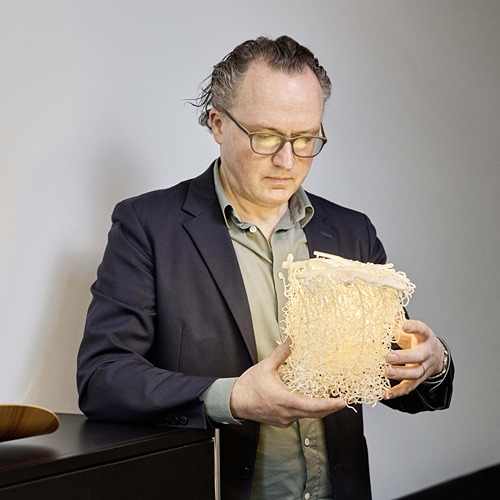 Bruno Weber University of Zürich, SwitzerlandBruno Weber trained at the University of Zurich and was a postdoctoral fellow at the Max Planck Institute in Tübingen before starting his own laboratory as an assistant professor back in Switzerland. He is now Full Professor and Director of the Institute of Pharmacology and Toxicology at the University of Zurich. His group uses a variety of imaging tools to study the neuron-glia-vascular communication pathways involved in energy metabolism and blood flow regulation in the cerebral cortex. Furthermore, his team is working to dissect the interaction of neurons and astrocytes with the vascular system, which is responsible for maintaining an adequate supply of oxygen and energy substrates to the brain. In addition to studying these systems, the group is also spearheading the development of imaging technology.
Bruno Weber University of Zürich, SwitzerlandBruno Weber trained at the University of Zurich and was a postdoctoral fellow at the Max Planck Institute in Tübingen before starting his own laboratory as an assistant professor back in Switzerland. He is now Full Professor and Director of the Institute of Pharmacology and Toxicology at the University of Zurich. His group uses a variety of imaging tools to study the neuron-glia-vascular communication pathways involved in energy metabolism and blood flow regulation in the cerebral cortex. Furthermore, his team is working to dissect the interaction of neurons and astrocytes with the vascular system, which is responsible for maintaining an adequate supply of oxygen and energy substrates to the brain. In addition to studying these systems, the group is also spearheading the development of imaging technology. Carmen Sandi École Polytechnique Fédérale de Lausanne (EPFL), SwitzerlandCarmen Sandi is Professor at the EPFL in Lausanne, where she heads the Laboratory of Behavioral Genetics. Her team investigates how brain mitochondria and metabolism regulate neural circuits underlying motivation, emotion, and stress responses. Using integrative approaches in rodents and humans, they examine individual differences in behavior and vulnerability to psychiatric disorders. She has served as President of the European Brain and Behavior Society (EBBS) and the Federation of European Neuroscience Societies (FENS), and currently chairs the Global Stress and Resilience Network.
Carmen Sandi École Polytechnique Fédérale de Lausanne (EPFL), SwitzerlandCarmen Sandi is Professor at the EPFL in Lausanne, where she heads the Laboratory of Behavioral Genetics. Her team investigates how brain mitochondria and metabolism regulate neural circuits underlying motivation, emotion, and stress responses. Using integrative approaches in rodents and humans, they examine individual differences in behavior and vulnerability to psychiatric disorders. She has served as President of the European Brain and Behavior Society (EBBS) and the Federation of European Neuroscience Societies (FENS), and currently chairs the Global Stress and Resilience Network.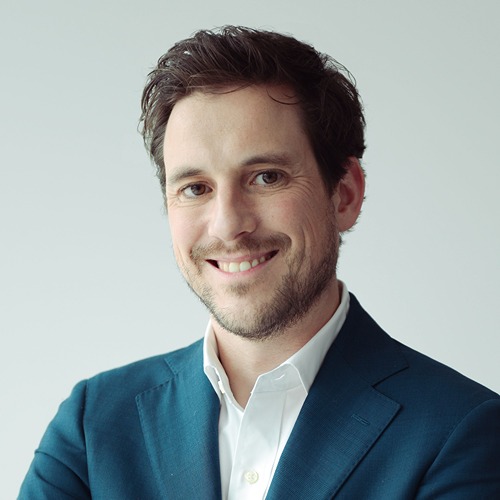 Charles Finsterwald Gliapharm, Switzerland
Charles Finsterwald Gliapharm, SwitzerlandDr. Charles Finsterwald is the co-founder and Chief Scientific Officer (CSO) of GliaPharm, a Swiss biotechnology company developing innovative therapeutics for neurological diseases. A neuroscientist by training, Dr. Finsterwald specializes in molecular, cellular and cognitive neuroscience. He holds a PhD in neuroscience from the Lemanic Neuroscience Doctoral School in Switzerland, where he investigated the role of neurotrophic factors in brain development. Dr. Finsterwald pursued postdoctoral research in Prof. Cristina Alberini’s laboratory at New York University, studying how stress influences memory consolidation, from physiological to pathological states.
Dr. Finsterwald then joined Prof. Pierre Magistretti’s laboratory at the Ecole Polytechnique Fédérale de Lausanne (EPFL, Switzerland), where he focused on astrocytic metabolism as pioneering therapeutic target in neurological disorders. This research led to the discovery of novel classes of compounds and the founding of GliaPharm in 2016. Beyond his scientific work, Dr. Finsterwald has training in project and venture management, including advanced studies at NYU and specialization in startup and biotechnology management at EPFL.
 Cristina Alberini New York University, USA
Cristina Alberini New York University, USACristina Maria Alberini is an Italian neuroscientist who studies the biological mechanisms of long-term memory. She is a Professor in Neuroscience at the Center for Neural Science in New York University, and adjunct professor at the Departments of Neuroscience, Psychiatry, and Structural and Chemical Biology at the Icahn School of Medicine at Mount Sinai in New York.
Her research focuses on understanding the cellular and molecular mechanisms underlying the stabilization, storage, and consolidation of long-term memories. Another part of her research involved the study of memory retrieval and reconsolidation.
In 2017 she was elected to the Dana Alliance for Brain Initiatives and awarded the Lombardy Region Rosa Camuna Award in 2019. In 2022 she was appointed as a Member of the American Academy of Arts and Sciences.
 Cristina García-Cáceres Helmholtz Munich, GermanyI am currently a W2 Professor at LMU and serve as the Head of Research and Deputy Director at the Institute for Diabetes and Obesity at Helmholtz Munich. I earned my Ph.D. in Neuroscience in Madrid, Spain, and gained international experience through academic internships at Yale University and Göteborg University. I then pursued postdoctoral research at Helmholtz Munich and TUM, which laid the foundation for my current research.My research is dedicated to uncovering the molecular mechanisms underlying obesity pathogenesis and other brain pathologies, with a particular focus on the hypothalamus's role in linking peripheral systems and the brain. This connection is crucial for regulating brain functions such as energy balance, behavior, and peripheral functions, including immune responses. Through my pioneering work, supported by the ERC Starting Grant, I demonstrated that the brain’s regulation of energy and glucose metabolism extends beyond specific neural circuits, implicating astrocytes as key players in these processes. Additionally, my research has revealed the previously unrecognized role of hypothalamic astrocytes in the development of obesity.
Cristina García-Cáceres Helmholtz Munich, GermanyI am currently a W2 Professor at LMU and serve as the Head of Research and Deputy Director at the Institute for Diabetes and Obesity at Helmholtz Munich. I earned my Ph.D. in Neuroscience in Madrid, Spain, and gained international experience through academic internships at Yale University and Göteborg University. I then pursued postdoctoral research at Helmholtz Munich and TUM, which laid the foundation for my current research.My research is dedicated to uncovering the molecular mechanisms underlying obesity pathogenesis and other brain pathologies, with a particular focus on the hypothalamus's role in linking peripheral systems and the brain. This connection is crucial for regulating brain functions such as energy balance, behavior, and peripheral functions, including immune responses. Through my pioneering work, supported by the ERC Starting Grant, I demonstrated that the brain’s regulation of energy and glucose metabolism extends beyond specific neural circuits, implicating astrocytes as key players in these processes. Additionally, my research has revealed the previously unrecognized role of hypothalamic astrocytes in the development of obesity.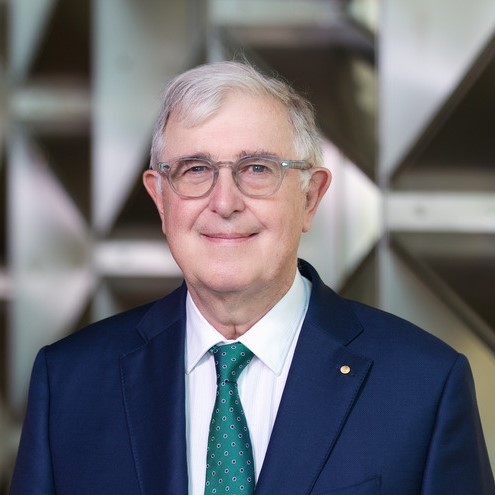 Sir Edward Byrne King Abdullah University of Science and Technology (KAUST), Saudi ArabiaProfessor Sir Edward Byrne is a neuroscientist and clinician known for his significant contributions to academia, healthcare, and society. He served as president and principal of King’s College London (KCL) from 2014 to 2021, where he led the university’s Vision 2029, enhancing its role on the national stage and chairing King’s Health Partners.
Sir Edward Byrne King Abdullah University of Science and Technology (KAUST), Saudi ArabiaProfessor Sir Edward Byrne is a neuroscientist and clinician known for his significant contributions to academia, healthcare, and society. He served as president and principal of King’s College London (KCL) from 2014 to 2021, where he led the university’s Vision 2029, enhancing its role on the national stage and chairing King’s Health Partners.
Before KCL, Professor Byrne was president and vice chancellor of Monash University in Australia from 2009 to 2014, where he elevated Monash’s global rankings into the top 100 universities worldwide.
He earned his medical degree from the University of Tasmania and trained as a neurologist in Adelaide and London. He is a fellow of the Royal Australasian College of Physicians, the Royal Colleges of Physicians of London and Edinburgh, and the American Academy of Neurology. He is a member of a number of learned academies including the Academy of Sciences in the UK and the Australian Academy of Science, Technology and Engineering.
Professor Byrne has received numerous honours, including the AO (Office r of the Orde r of Australia) in 2006, the AC (Companion of the Order of Australia) in 2014, and a Knighthood in the Queen’s Birthday Honours in 2020. George Brooks University of California, Berkeley, USAGeorge A. Brooks, Ph.D. is Professor of Integrative Biology at the University of California, Berkeley. Dr. Brooks is a Fellow of the American Physiological Society (APS), American College of Sports Medicine (ACSM), and European College of Sports Science (ECSS). From athletics and exercise and altitude physiology research George A. Brooks developed the Lactate Shuttle concept. Lactate shuttling has three functions; lactate is a fuel energy source, the main gluconeogenic precursor, and a signaling molecule with autocrine, paracrine and endocrine functions. Endurance training develops the capacities to produce, remove and utilize lactate as a fuel energy source. Lactate is favored as a fuel by working red muscle, heart, liver and brain. Moreover, from extant data related to the Hepatic Glycogen Paradox, it was possible to educe that a Postprandial Lactate Shuttle plays a major role in dietary carbohydrate metabolism. As a result of new understanding lactate is used to provide metabolic support to endurance athletes and as an extracellular fluid replacement (e.g., dehydration, hypovolemia, hemorrhage), metabolic acidosis, heart failure, myocardial infarction, inflammation and Dengue. As well, lactate supplementation being evaluated to treat, traumatic brain injury and sepsis. A notable exception to lactate efficacy is cancer where lactate shuttling needs to be blocked. In his lecture Brooks will inform about Lactate Shuttle theory and encourage others to translate theory into practice.
George Brooks University of California, Berkeley, USAGeorge A. Brooks, Ph.D. is Professor of Integrative Biology at the University of California, Berkeley. Dr. Brooks is a Fellow of the American Physiological Society (APS), American College of Sports Medicine (ACSM), and European College of Sports Science (ECSS). From athletics and exercise and altitude physiology research George A. Brooks developed the Lactate Shuttle concept. Lactate shuttling has three functions; lactate is a fuel energy source, the main gluconeogenic precursor, and a signaling molecule with autocrine, paracrine and endocrine functions. Endurance training develops the capacities to produce, remove and utilize lactate as a fuel energy source. Lactate is favored as a fuel by working red muscle, heart, liver and brain. Moreover, from extant data related to the Hepatic Glycogen Paradox, it was possible to educe that a Postprandial Lactate Shuttle plays a major role in dietary carbohydrate metabolism. As a result of new understanding lactate is used to provide metabolic support to endurance athletes and as an extracellular fluid replacement (e.g., dehydration, hypovolemia, hemorrhage), metabolic acidosis, heart failure, myocardial infarction, inflammation and Dengue. As well, lactate supplementation being evaluated to treat, traumatic brain injury and sepsis. A notable exception to lactate efficacy is cancer where lactate shuttling needs to be blocked. In his lecture Brooks will inform about Lactate Shuttle theory and encourage others to translate theory into practice. Gesine Saher Max Planck Institute Göttingen, GermanyDr. Gesine SaherProject group leader “Biology of Lipids”, Department of Neurogenetics, Max Planck Institute of Experimental Medicine, now Max Planck Institute for Multidisciplinary Sciences (MPINAT), Goettingen, GermanyPostdoctoral fellow, Department of Neurogenetics, Max Planck Institute of Experimental Medicine, Goettingen, GermanyProject manager, Clinical Research / Oncology, Novartis Pharma GmbH, Nuremberg, GermanyPhD: Max Planck Institute of Biochemistry, Munich, GermanyDiploma: Biology, Technical University Braunschweig, Germany
Gesine Saher Max Planck Institute Göttingen, GermanyDr. Gesine SaherProject group leader “Biology of Lipids”, Department of Neurogenetics, Max Planck Institute of Experimental Medicine, now Max Planck Institute for Multidisciplinary Sciences (MPINAT), Goettingen, GermanyPostdoctoral fellow, Department of Neurogenetics, Max Planck Institute of Experimental Medicine, Goettingen, GermanyProject manager, Clinical Research / Oncology, Novartis Pharma GmbH, Nuremberg, GermanyPhD: Max Planck Institute of Biochemistry, Munich, GermanyDiploma: Biology, Technical University Braunschweig, Germany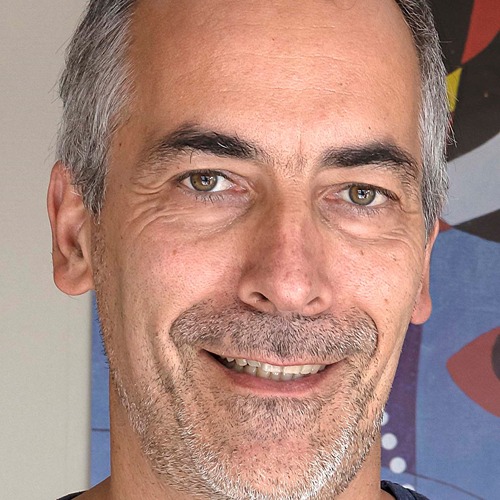 Gilles Bonvento CNRS Paris, FranceGilles Bonvento is Senior Research Director at INSERM and was until recently head of the Neurodegenerative Disease Laboratory (CNRS, University Paris-Saclay and CEA) in Fontenay-aux-Roses, France. He is now heading a research group at the Paris-Saclay Institute of Neuroscience (NeuroPSI). His main areas of expertise are astrocyte-neurons interactions, in vivo mouse models of neurodegenerative diseases, neuroimaging, therapeutic evaluation, energy metabolism and gene transfer in the CNS. His recent work has positioned metabolism as a direct regulator of synaptic activity, plasticity and memory. He has identified L-serine as a key amino acid produced by glycolysis in astrocytes, playing an important role in glutamatergic transmission.
Gilles Bonvento CNRS Paris, FranceGilles Bonvento is Senior Research Director at INSERM and was until recently head of the Neurodegenerative Disease Laboratory (CNRS, University Paris-Saclay and CEA) in Fontenay-aux-Roses, France. He is now heading a research group at the Paris-Saclay Institute of Neuroscience (NeuroPSI). His main areas of expertise are astrocyte-neurons interactions, in vivo mouse models of neurodegenerative diseases, neuroimaging, therapeutic evaluation, energy metabolism and gene transfer in the CNS. His recent work has positioned metabolism as a direct regulator of synaptic activity, plasticity and memory. He has identified L-serine as a key amino acid produced by glycolysis in astrocytes, playing an important role in glutamatergic transmission. Giovanni Marsicano University of Bordeaux, FranceDr. Giovanni Marsicano is a tenured researcher at Inserm. He leads the group “Endocannabinoids and Neuroadaptation” at the NeuroCentre Magendie, an INSERM and University of Bordeaux Research Center devoted to neuroscience. Dr. Marsicano is a Veterinary Medicine Doctor as formation. After his diploma, he worked on research related to Embryonic Stem Cells from farm animals and to xenotransplantation models in Italy for 4 years. He then moved to the Max-Planck Institute of Psychiatry in Munich for a PhD student position with Beat Lutz, where he initiated the work on the role of type-1 cannabinoid receptors (CB1) and of the endocannabinoid system (ECS) in brain physiology, which has been his main research interest since. The subject of his PhD thesis was the generation of conditional mutants for CB1 and anatomical and functional studies on the mechanisms of action of the ECS. After PhD graduation in 2001, he made two post-doctoral periods in Germany and moved to Bordeaux in 2006 (recruited as Inserm senior scientist in 2007) to lead his independent research group. He is member of the SfN, the French Society of Neuroscience, the International Cannabinoid Research Society (ICRS), and he has been recently elected at EMBO and at FRM (Fondation de la Recherche Medicale). He received, among others, the IACM Young Investigator Award (2007), the Bettencourt-Schuller Price (2008), the Grand Prix Robert Debré (2015), and the prestigious Grand Prix Lamonica for Neurobiology (2021).
Giovanni Marsicano University of Bordeaux, FranceDr. Giovanni Marsicano is a tenured researcher at Inserm. He leads the group “Endocannabinoids and Neuroadaptation” at the NeuroCentre Magendie, an INSERM and University of Bordeaux Research Center devoted to neuroscience. Dr. Marsicano is a Veterinary Medicine Doctor as formation. After his diploma, he worked on research related to Embryonic Stem Cells from farm animals and to xenotransplantation models in Italy for 4 years. He then moved to the Max-Planck Institute of Psychiatry in Munich for a PhD student position with Beat Lutz, where he initiated the work on the role of type-1 cannabinoid receptors (CB1) and of the endocannabinoid system (ECS) in brain physiology, which has been his main research interest since. The subject of his PhD thesis was the generation of conditional mutants for CB1 and anatomical and functional studies on the mechanisms of action of the ECS. After PhD graduation in 2001, he made two post-doctoral periods in Germany and moved to Bordeaux in 2006 (recruited as Inserm senior scientist in 2007) to lead his independent research group. He is member of the SfN, the French Society of Neuroscience, the International Cannabinoid Research Society (ICRS), and he has been recently elected at EMBO and at FRM (Fondation de la Recherche Medicale). He received, among others, the IACM Young Investigator Award (2007), the Bettencourt-Schuller Price (2008), the Grand Prix Robert Debré (2015), and the prestigious Grand Prix Lamonica for Neurobiology (2021). Gulcin Pekkurnaz University of California, San Diego (UCSD), USA
Gulcin Pekkurnaz University of California, San Diego (UCSD), USAGulcin Pekkurnaz is an Associate Professor of Neurobiology at the University of California San Diego. She received her undergraduate degree from Ankara University, completed her PhD training at the National Institutes of Health, and pursued post-doctoral studies in the Department of Neurobiology at Harvard Medical School. The Pekkurnaz Laboratory investigates the molecular mechanisms that regulate metabolic homeostasis in the nervous system. By examining how neuronal metabolism interfaces with mitochondrial function, nutrient selectivity and pathway-specific signaling in different neuronal subtypes, the laboratory aims to uncover how metabolic regulation shapes neuronal function and how its disruption contributes to neurological disease.
 Imen Belhaj University of Oslo, Norway
Imen Belhaj University of Oslo, NorwayImen Belhaj is a PhD fellow in neuroscience at the University of Oslo. Her research focuses on how lactate-driven metabolic signaling regulates synaptic resilience, autophagy and neuroinflammation in Alzheimer’s disease models, with the aim of identifying new therapeutic strategies to preserve memory and neuronal health.
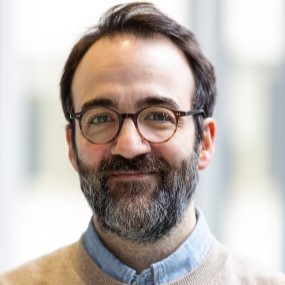 Jaime de Juan-Sanz Paris Brain Institute, FranceFollowing his graduate studies in Molecular Neurobiology at the Center of Molecular Biology Severo Ochoa (Madrid, Spain), Jaime joined in 2013 the lab of Dr. Timothy A. Ryan at Weill Cornell Medical College for his postdoc where he worked on developing novel tools to study the role of presynaptic organelles in synaptic transmission. In 2019 Jaime was recruited as independent Team Leader at the Paris Brain Institute (France), where he currently leads a laboratory focused on developing cutting-edge optical tools to better understand the molecular mechanisms controlling synaptic transmission. His research is supported by the European Research Council (ERC), an ATIP-avenir grant (Inserm, CNRS, France), the Kavli Foundation, the French Agency for Research (ANR) and the Diane Barrière Chair in Synaptic Bioenergetics (Paris Brain Institute, France).
Jaime de Juan-Sanz Paris Brain Institute, FranceFollowing his graduate studies in Molecular Neurobiology at the Center of Molecular Biology Severo Ochoa (Madrid, Spain), Jaime joined in 2013 the lab of Dr. Timothy A. Ryan at Weill Cornell Medical College for his postdoc where he worked on developing novel tools to study the role of presynaptic organelles in synaptic transmission. In 2019 Jaime was recruited as independent Team Leader at the Paris Brain Institute (France), where he currently leads a laboratory focused on developing cutting-edge optical tools to better understand the molecular mechanisms controlling synaptic transmission. His research is supported by the European Research Council (ERC), an ATIP-avenir grant (Inserm, CNRS, France), the Kavli Foundation, the French Agency for Research (ANR) and the Diane Barrière Chair in Synaptic Bioenergetics (Paris Brain Institute, France).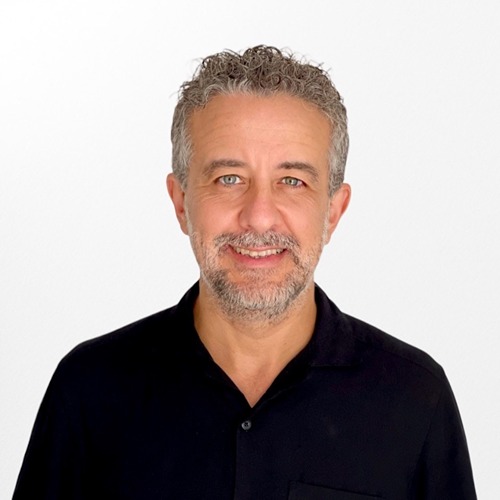 Jordi Duran IQS Barcelona - Universitat Ramon Llull, Spain
Jordi Duran IQS Barcelona - Universitat Ramon Llull, SpainJordi Duran, PhD (www.drjordiduran.com), is a Principal Investigator at IQS Barcelona - Universitat Ramon Llull, where he leads a of the Brain Metabolism research group focused on brain glycogen metabolism and its role in neurodegenerative diseases. His work explores how glycogen dynamics in neurons and astrocytes influence normal brain function and contribute to pathologies such as Lafora disease or Alzheimer's disease.
 Joshua Rabinowitz Princeton University, USAJoshua Rabinowitz is Professor of Chemistry & Integrative Genomics at Princeton University and the founding Director of the Ludwig Princeton Branch. He brings a quantitative, chemical perspective to the study of diet, metabolism and disease. His research focuses on two broad questions: What are the quantitative concentrations and flows (fluxes) in metabolic pathways? How are they controlled? To address these questions, his lab develops innovative technologies that blend mass spectrometry, isotope tracers, and computational data integration. These technologies have been broadly applied to address major biomedical problems, including diabetes, infectious disease, and cancer. In the field of oncology, Dr. Rabinowitz contributed to the discovery of the cancer-causing metabolite, 2-hydroxyglutarate. More recently, his work found that lactate, classically considered a waste product, is actually a major circulating fuel. Ongoing work aims to advance quantitative measurement technologies for spatially resolved analysis of animal metabolism.
Joshua Rabinowitz Princeton University, USAJoshua Rabinowitz is Professor of Chemistry & Integrative Genomics at Princeton University and the founding Director of the Ludwig Princeton Branch. He brings a quantitative, chemical perspective to the study of diet, metabolism and disease. His research focuses on two broad questions: What are the quantitative concentrations and flows (fluxes) in metabolic pathways? How are they controlled? To address these questions, his lab develops innovative technologies that blend mass spectrometry, isotope tracers, and computational data integration. These technologies have been broadly applied to address major biomedical problems, including diabetes, infectious disease, and cancer. In the field of oncology, Dr. Rabinowitz contributed to the discovery of the cancer-causing metabolite, 2-hydroxyglutarate. More recently, his work found that lactate, classically considered a waste product, is actually a major circulating fuel. Ongoing work aims to advance quantitative measurement technologies for spatially resolved analysis of animal metabolism.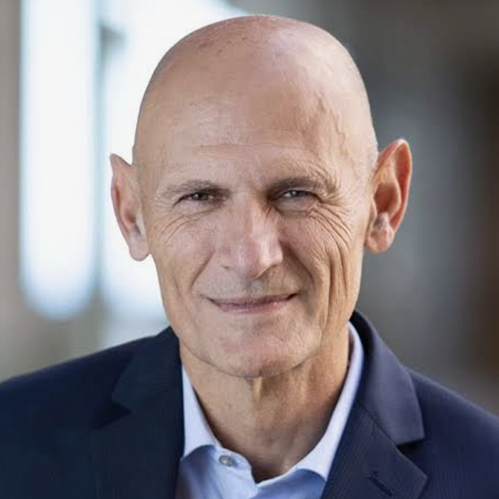 Juan C. Izpisua Belmonte Altos Labs, USADuring life’s early stages cells display high levels of plasticity, regeneration and resilience against stress, dysfunction and injury, which are key features of human health. Dr. Juan Carlos Izpisua Belmonte, previously the Roger Guillemin Chair and Professor at the Salk Institute, has contributed towards understanding the molecular basis underlying embryogenesis and early postnatal life, as well as gained insights into how to program and rejuvenate adult and diseased cells. He is developing technologies to program cells to states similar to those observed in the early, healthy stages of life, with the objective of developing universal health therapeutics to overcome human disease and aging.
Juan C. Izpisua Belmonte Altos Labs, USADuring life’s early stages cells display high levels of plasticity, regeneration and resilience against stress, dysfunction and injury, which are key features of human health. Dr. Juan Carlos Izpisua Belmonte, previously the Roger Guillemin Chair and Professor at the Salk Institute, has contributed towards understanding the molecular basis underlying embryogenesis and early postnatal life, as well as gained insights into how to program and rejuvenate adult and diseased cells. He is developing technologies to program cells to states similar to those observed in the early, healthy stages of life, with the objective of developing universal health therapeutics to overcome human disease and aging.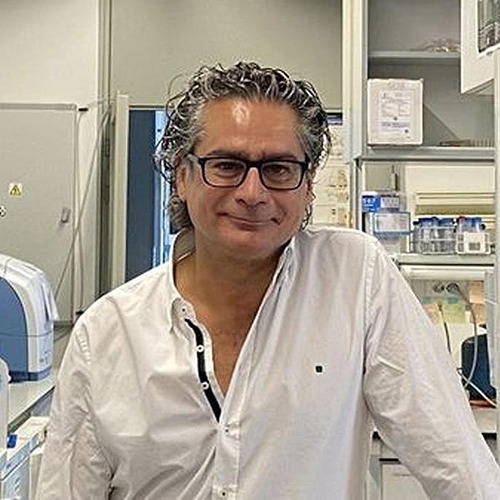 Juan Pedro Bolaños Universidad de Salamanca, SpainJuan P. Bolaños studied Pharmacy at the University of Salamanca (USAL, Spain), where he performed a PhD in Biochemistry & Molecular Biology. He moved to the Institute of Neurology (London, UK) as an EU-funded Marie Curie Postdoc. He returned to USAL, became a lecturer, and then a full professor (2005). He received the Marie Curie Excellence Award in 2005 and the Castilla-León Research Prize in 2021. He is a senior and associate editor in several journals and has organized a dozen international conferences. He was the president of the European Society for Neurochemistry. He is interested in regulating the metabolic and redox coupling amongst the brain cells and its impact on behavior and neurological diseases.
Juan Pedro Bolaños Universidad de Salamanca, SpainJuan P. Bolaños studied Pharmacy at the University of Salamanca (USAL, Spain), where he performed a PhD in Biochemistry & Molecular Biology. He moved to the Institute of Neurology (London, UK) as an EU-funded Marie Curie Postdoc. He returned to USAL, became a lecturer, and then a full professor (2005). He received the Marie Curie Excellence Award in 2005 and the Castilla-León Research Prize in 2021. He is a senior and associate editor in several journals and has organized a dozen international conferences. He was the president of the European Society for Neurochemistry. He is interested in regulating the metabolic and redox coupling amongst the brain cells and its impact on behavior and neurological diseases. Klaus-Armin Nave Max Planck Institute Göttingen, Germany
Klaus-Armin Nave Max Planck Institute Göttingen, GermanyKlaus-Armin Nave obtained a PhD in Neuroscience from UCSD in 1987 followed by postdoctoral training at the Salk Institute in La Jolla. In 1991, he returned to Germany as an independent research group leader at the Center for Molecular Biology (ZMBH) of the University of Heidelberg and was promoted to Full Professor in 1997. In 1999, he became Director of the Department of Neurogenetics at the Max Planck Institute in Göttingen (MPI-EM/MPI-NAT). His research focusses on the axonal control of myelination, glial support of axonal energy metabolism and the role of oligodendrocytes in neurodegenerative diseases.
 L. Felipe Barros Universidad San Sebastián, ChileL. Felipe Barros qualified as a Medic in 1988 and got his Ph.D. in Sciences in 1993 at the Universidad de Chile, advised by David Yudilevich. From 1993 to 1996 he was a Postdoctoral Wellcome Trust Fellow in Steve Baldwin´s lab in Leeds, UK. From 1996 to 2000 he lectured at the University of Chile. He joined the Centro de Estudios Científicos -CECs, as principal investigator in 2000 (Director from 2025) and joined Universidad San Sebastián as Professor in 2022.
L. Felipe Barros Universidad San Sebastián, ChileL. Felipe Barros qualified as a Medic in 1988 and got his Ph.D. in Sciences in 1993 at the Universidad de Chile, advised by David Yudilevich. From 1993 to 1996 he was a Postdoctoral Wellcome Trust Fellow in Steve Baldwin´s lab in Leeds, UK. From 1996 to 2000 he lectured at the University of Chile. He joined the Centro de Estudios Científicos -CECs, as principal investigator in 2000 (Director from 2025) and joined Universidad San Sebastián as Professor in 2022. Leena Ibrahim King Abdullah University of Science and Technology (KAUST), Saudi Arabia
Leena Ibrahim King Abdullah University of Science and Technology (KAUST), Saudi ArabiaProfessor Leena Ali Ibrahim leads the Neurocircuits Lab investigating how sensory experience and development shape inhibitory circuits in the brain. She earned her Ph.D. in Neuroscience from the University of Southern California, U.S., and completed postdoctoral training at Harvard Medical School, U.S., where she studied the development and function of cortical circuits. In 2022, she was named a Next Generation Leader by the Allen Institute, recognizing her as one of a distinguished group of early-career neuroscientists guiding cutting-edge research in brain science.
 Manu Goyal Washington University School of Medicine, USAManu S. Goyal, MD, MSc, is an associate professor of radiology and principal investigator in the Neuroimaging Labs Research Center for Mallinckrodt Institute of Radiology at Washington University School of Medicine in St. Louis. A clinical expert in stroke and cerebrovascular imaging, Goyal has prior training in radiology, neurology and neuroradiology. Along with Andrei G. Vlassenko, MD, PhD, he directs an NIH-funded human brain imaging lab that aims to study mechanisms underlying brain aging and resilience to neurological disorders such as Alzheimer's disease and cerebrovascular disease. Dr. Goyal further co-leads efforts using in vivo optical imaging methods in mice and advanced transcriptomics of human postmortem tissue to study the pathophysiology of brain aging related diseases.
Manu Goyal Washington University School of Medicine, USAManu S. Goyal, MD, MSc, is an associate professor of radiology and principal investigator in the Neuroimaging Labs Research Center for Mallinckrodt Institute of Radiology at Washington University School of Medicine in St. Louis. A clinical expert in stroke and cerebrovascular imaging, Goyal has prior training in radiology, neurology and neuroradiology. Along with Andrei G. Vlassenko, MD, PhD, he directs an NIH-funded human brain imaging lab that aims to study mechanisms underlying brain aging and resilience to neurological disorders such as Alzheimer's disease and cerebrovascular disease. Dr. Goyal further co-leads efforts using in vivo optical imaging methods in mice and advanced transcriptomics of human postmortem tissue to study the pathophysiology of brain aging related diseases. Maribel Rios Tufts University, USADr. Maribel Rios is a Professor in the Department of Neuroscience at Tufts University School of Medicine in Boston, Massachusetts. She earned her Ph.D. in Cell, Molecular, and Developmental Biology from the Graduate School of Biomedical Sciences at Tufts University, followed by postdoctoral training at MIT and the Whitehead Institute. Dr. Rios has a longstanding interest in neurotrophin biology, with a particular focus on the role of brain-derived neurotrophic factor (BDNF) in regulating neural circuits that control feeding, body weight, energy expenditure, and glucose homeostasis.
Maribel Rios Tufts University, USADr. Maribel Rios is a Professor in the Department of Neuroscience at Tufts University School of Medicine in Boston, Massachusetts. She earned her Ph.D. in Cell, Molecular, and Developmental Biology from the Graduate School of Biomedical Sciences at Tufts University, followed by postdoctoral training at MIT and the Whitehead Institute. Dr. Rios has a longstanding interest in neurotrophin biology, with a particular focus on the role of brain-derived neurotrophic factor (BDNF) in regulating neural circuits that control feeding, body weight, energy expenditure, and glucose homeostasis.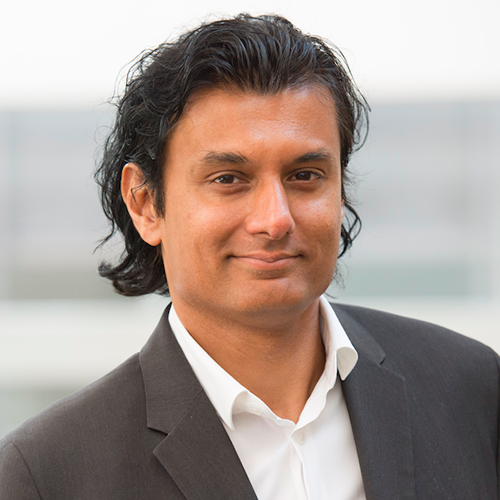 Navdeep Chandel Northwestern University, USANavdeep S. Chandel (Nav) is the David W. Cugell Professor of Medicine, Biochemistry, and Molecular Genetics at Northwestern University. He received his BA in Mathematics and Ph.D. in Cell Physiology at the University of Chicago as well as a post-doctoral fellowship at the University of Chicago. In 2000, he started his laboratory at Northwestern University on the concept of “Mitochondria as signaling organelles”. He has written a widely utilized introductory book entitled “Navigating Metabolism” (Cold Spring Harbor Press). He received the Clarence Ver Steeg Faculty Mentor Award in 2013, which recognizes faculty members from any department throughout Northwestern University for their outstanding mentorship of graduate students. In 2023, he was co-recipient of the FNIH Lurie Prize in Biomedical Science.
Navdeep Chandel Northwestern University, USANavdeep S. Chandel (Nav) is the David W. Cugell Professor of Medicine, Biochemistry, and Molecular Genetics at Northwestern University. He received his BA in Mathematics and Ph.D. in Cell Physiology at the University of Chicago as well as a post-doctoral fellowship at the University of Chicago. In 2000, he started his laboratory at Northwestern University on the concept of “Mitochondria as signaling organelles”. He has written a widely utilized introductory book entitled “Navigating Metabolism” (Cold Spring Harbor Press). He received the Clarence Ver Steeg Faculty Mentor Award in 2013, which recognizes faculty members from any department throughout Northwestern University for their outstanding mentorship of graduate students. In 2023, he was co-recipient of the FNIH Lurie Prize in Biomedical Science.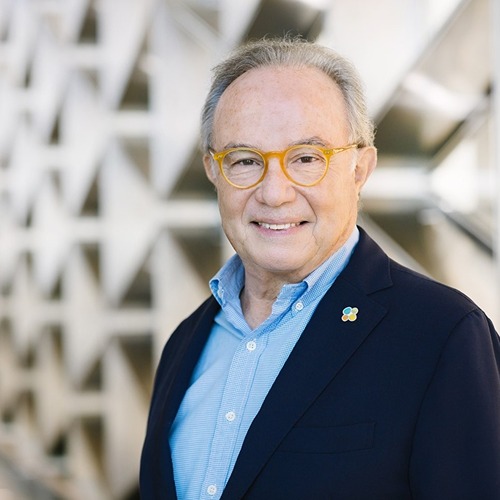 Pierre J. Magistretti King Abdullah University of Science and Technology (KAUST), Saudi Arabia
Pierre J. Magistretti King Abdullah University of Science and Technology (KAUST), Saudi ArabiaPierre J. Magistretti received his MD in 1979 from the University of Geneva and his PhD in Biology in 1982 from UCSD. He is Professor Emeritus at the Brain Mind Institute at EPFL and in the Departments of Psychiatry at the University of Lausanne and the University of Geneva. He is also a Distinguished Professor in the Division of Biological and Environmental Sciences and Engineering at KAUST, where he was Dean from 2012 to 2020 and Vice President of Research since 2022.
Magistretti’s laboratory has discovered some of the cellular and molecular mechanisms that underlie the coupling between neuronal activity and energy consumption by revealing the key role of glial cells, particularly astrocytes, in this physiological process. These findings are especially relevant for understanding the origin of the signals detected by functional brain imaging and are revealing a role for astrocytes in neuronal plasticity and neuroprotection.
He is the author of over 300 publications in international peer-reviewed journals; he regularly appears on the Clarivate list of highly cited scientists, with an h-index of 119 and over 64,000 citations. He has given over 90 invited lectures in the past five years.
He held the International Chair at the Collège de France, Paris, from 2007 to 2008. In 2021, he was elected a Foreign Member of the Accademia Nazionale dei Lincei, the oldest academy in Europe (founded in 1603). He is a member of Academia Europaea, the Swiss Academy of Medical Sciences, and the Norwegian Academy of Sciences and Letters.
Among other recognitions, Magistretti has been awarded the Camillo Golgi Medal Award, the Emil Kraepelin Professorship, the Goethe Award of the Canadian Psychological Association, the Ott Prize of the Swiss Academy of Medical Sciences, and the IPSEN Foundation Prize.
Magistretti is an honorary member of the Chinese Association of Physiological Sciences and a Fellow of the American College of Psychopharmacology. He is the Past President of the Federation of European Neuroscience Societies (FENS) and Past President of the International Brain Research Organization (IBRO).
He served on the Board of Trustees of the Human Frontiers Science Program Organization from 2003 to 2020. He is and has been a member of several academic scientific advisory boards, including the Research Council of the Swiss National Science Foundation.
He is the co-founder of two start-up companies based on his research in Switzerland, LynceeTech and GliaPharm, and one in KSA, NoorDx.
He is the co-author of three books on the links between neuroscience and psychoanalysis. In 2024, he published the best-selling book Ammon's Horn, or The Mystery of the Brain: A Novel, written with his wife, Christine Magistretti.
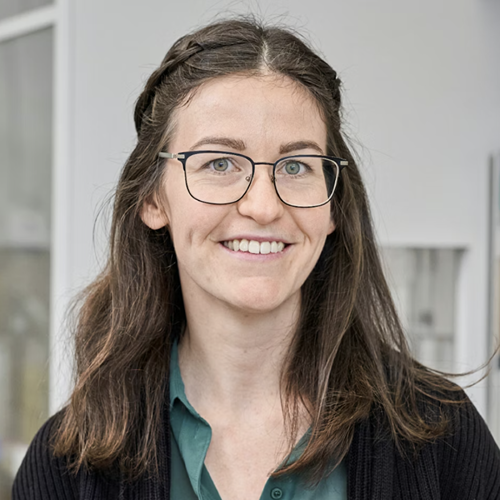 Rachel Meister University of Zurich, SwitzerlandRachel is a fourth-year PhD student at the University of Zurich, Switzerland, working on brain energy metabolism in Prof. Bruno Weber’s lab. Cutting-edge tools such as two-photon microscopy and fluorescence lifetime imaging (FLIM), combined with a variety of genetically encoded fluorescence sensors, form the basis of her work. Her research is focused on understanding glucose metabolism of neurons and astrocytes in the living mouse brain, both in physiological contexts and under a ketogenic diet.
Rachel Meister University of Zurich, SwitzerlandRachel is a fourth-year PhD student at the University of Zurich, Switzerland, working on brain energy metabolism in Prof. Bruno Weber’s lab. Cutting-edge tools such as two-photon microscopy and fluorescence lifetime imaging (FLIM), combined with a variety of genetically encoded fluorescence sensors, form the basis of her work. Her research is focused on understanding glucose metabolism of neurons and astrocytes in the living mouse brain, both in physiological contexts and under a ketogenic diet. Reyna Hernandez Benitez Altos Labs, USADr. Reyna Hernandez-Benitez, is a professional with expertise in biomedical sciences and management, Reyna holds a Ph.D. in Biomedical Sciences from the National Mexican University UNAM. She also completed an MBA Program at UCSD's Rady School of Management in California. She dedicates her life to scientific research and practical management, currently in her position as Senior Scientist at Altos Labs, in San Diego California. Her former experience includes work in the research division of Children's Hospital of Michigan, and postdoctoral positions at KAUST at group of Dr. Pierre Magistretti and at Salk Institute of Biological Studies at Dr. Juan Carlos Belmonte group.
Reyna Hernandez Benitez Altos Labs, USADr. Reyna Hernandez-Benitez, is a professional with expertise in biomedical sciences and management, Reyna holds a Ph.D. in Biomedical Sciences from the National Mexican University UNAM. She also completed an MBA Program at UCSD's Rady School of Management in California. She dedicates her life to scientific research and practical management, currently in her position as Senior Scientist at Altos Labs, in San Diego California. Her former experience includes work in the research division of Children's Hospital of Michigan, and postdoctoral positions at KAUST at group of Dr. Pierre Magistretti and at Salk Institute of Biological Studies at Dr. Juan Carlos Belmonte group.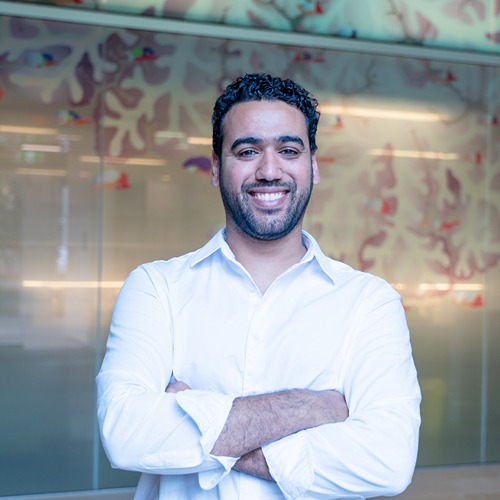 Saber Abdelkader The University of Queensland, Australia
Saber Abdelkader The University of Queensland, AustraliaDr. Saber H. Saber is a Postdoctoral Research Fellow at the Queensland Brain Institute (QBI), where his work focuses on neuronal lipid metabolism and its role in synaptic function and neurodegeneration. His research investigates how enzymes such as DDHD2 generate saturated free fatty acids to support mitochondrial energy production, protein myristoylation, and neuronal plasticity. Building on his PhD discoveries in mitochondrial dysfunction and lipid-driven rescue strategies, Dr. Saber’s postdoctoral work integrates advanced super-resolution imaging, metabolic flux assays, and multi-omics approaches to uncover how metabolic defects contribute to neurological disorders, including hereditary spastic paraplegia and cognitive decline.
 Sabrina Diano Columbia University, USADr. Sabrina Diano is the Robert R. Williams Professor of Nutrition, Director of the Institute of Human Nutrition and Professor of Molecular Pharmacology and Therapeutics and Physiology and Cellular Biophysics at Columbia University Irving Medical Center. She is also an adjunct Professor at Yale University, Cellular and Molecular Physiology department.She earned a Doctor of Biology degree in 1993 and a PhD in 1999 at the University of Naples “Federico II” in Naples, Italy.She became faculty at Yale University in 2000, where she moved up the ranks. In September 2020, she moved to Columbia University to direct the Institute of Human Nutrition.Her research has focused on deciphering intracellular mechanisms that enable brain (hypothalamic) cells to sense and respond to changes in circulating signals to control food intake and energy and glucose metabolism. Findings from her laboratory have unmasked mitochondrial mechanisms essential in regulating hypothalamic cell functions. By sensing and responding to changes in nutrient availability, hypothalamic cells can alter behavior and peripheral tissue functions to fine-tune systemic metabolism.The results of her research have important implications for the pathogenesis of metabolic syndrome, obesity, and type 2 diabetes, disorders that are the leading cause of morbidity and mortality in the U.S. and the developed world in general, with the highest financial burden on the national economy.Her studies on fundamental principles of metabolism regulation have been nationally and internationally recognized. She has been featured in the Women in Metabolism 2015 series: The “Rosies” of Cell Metabolism, the 10th year anniversary celebrations of Cell Metabolism, featuring influential women in metabolism research. In 2015, she was awarded the Novo Nordisk Foundation Laureate Award in Denmark, which she declined. She received the Helmholtz Diabetes Award 2018 from the Helmholtz Society in Germany for her studies on central control of glucose metabolism. Most recently, she was elected as an honorary Fellow of the AAAS. Her studies have been published in high-impact journals, including Nature, Science, Cell, Nature Medicine, Nature Neuroscience, Cell Metabolism, Diabetes, JCI, and PNAS, and her research program has been continuously supported by the National Institute of Health.
Sabrina Diano Columbia University, USADr. Sabrina Diano is the Robert R. Williams Professor of Nutrition, Director of the Institute of Human Nutrition and Professor of Molecular Pharmacology and Therapeutics and Physiology and Cellular Biophysics at Columbia University Irving Medical Center. She is also an adjunct Professor at Yale University, Cellular and Molecular Physiology department.She earned a Doctor of Biology degree in 1993 and a PhD in 1999 at the University of Naples “Federico II” in Naples, Italy.She became faculty at Yale University in 2000, where she moved up the ranks. In September 2020, she moved to Columbia University to direct the Institute of Human Nutrition.Her research has focused on deciphering intracellular mechanisms that enable brain (hypothalamic) cells to sense and respond to changes in circulating signals to control food intake and energy and glucose metabolism. Findings from her laboratory have unmasked mitochondrial mechanisms essential in regulating hypothalamic cell functions. By sensing and responding to changes in nutrient availability, hypothalamic cells can alter behavior and peripheral tissue functions to fine-tune systemic metabolism.The results of her research have important implications for the pathogenesis of metabolic syndrome, obesity, and type 2 diabetes, disorders that are the leading cause of morbidity and mortality in the U.S. and the developed world in general, with the highest financial burden on the national economy.Her studies on fundamental principles of metabolism regulation have been nationally and internationally recognized. She has been featured in the Women in Metabolism 2015 series: The “Rosies” of Cell Metabolism, the 10th year anniversary celebrations of Cell Metabolism, featuring influential women in metabolism research. In 2015, she was awarded the Novo Nordisk Foundation Laureate Award in Denmark, which she declined. She received the Helmholtz Diabetes Award 2018 from the Helmholtz Society in Germany for her studies on central control of glucose metabolism. Most recently, she was elected as an honorary Fellow of the AAAS. Her studies have been published in high-impact journals, including Nature, Science, Cell, Nature Medicine, Nature Neuroscience, Cell Metabolism, Diabetes, JCI, and PNAS, and her research program has been continuously supported by the National Institute of Health. Stefanie Schirmeier Technische Universität Dresden, GermanyStefanie Schirmeier graduated from the University of Bayreuth (Germany) obtained her Ph. D. form the University of Strasbourg (France), where she worked in the team of Dominique Ferrandon.After her doctoral training she moved to the University of Münster (Germany) for a postdoctoral position, joining Christian Klämbt’s team and later establishing her own research group. Stefanie focused on investigating the physiology and metabolism of glial cells and uncovered their conserved role in neuronal metabolic support.Since 2021, Stefanie has been a professor at Dresden Technical University, where she leads the Department of Zoology and Animal Physiology. Her research team investigates metabolic mechanisms in the Drosophila nervous system and the ability of brain energy metabolism to flexibly adapt to changing circumstances.
Stefanie Schirmeier Technische Universität Dresden, GermanyStefanie Schirmeier graduated from the University of Bayreuth (Germany) obtained her Ph. D. form the University of Strasbourg (France), where she worked in the team of Dominique Ferrandon.After her doctoral training she moved to the University of Münster (Germany) for a postdoctoral position, joining Christian Klämbt’s team and later establishing her own research group. Stefanie focused on investigating the physiology and metabolism of glial cells and uncovered their conserved role in neuronal metabolic support.Since 2021, Stefanie has been a professor at Dresden Technical University, where she leads the Department of Zoology and Animal Physiology. Her research team investigates metabolic mechanisms in the Drosophila nervous system and the ability of brain energy metabolism to flexibly adapt to changing circumstances. Vincent Prevot INSERM Lille, FranceI am currently a Research Director of Exceptional Class at Inserm (the French National Institute of Health and Medical Research) and have led the "Development and Plasticity of the Postnatal Brain" laboratory at the Lille Neuroscience & Cognition Research Center in Lille, France, since 2007. My research primarily focuses on the central control of energy homeostasis and the neurobiology of reproduction. Among my pioneering studies is the discovery that tanycytes, specialized ependymoglial cells lining the floor of the third ventricle, transport circulating metabolic signals such as leptin and anti-obesity drugs across brain barriers into the hypothalamus to regulate energy homeostasis. Additionally, we have demonstrated the crucial role of tanycytes as sensory detectors in the metabolic brain, “sniffing out” metabolic and hormonal signals such as glucose and estrogens, and conveying this information to POMC and NPY neurons, respectively—cells that otherwise cannot directly sense these signals—to modulate their activity.
Vincent Prevot INSERM Lille, FranceI am currently a Research Director of Exceptional Class at Inserm (the French National Institute of Health and Medical Research) and have led the "Development and Plasticity of the Postnatal Brain" laboratory at the Lille Neuroscience & Cognition Research Center in Lille, France, since 2007. My research primarily focuses on the central control of energy homeostasis and the neurobiology of reproduction. Among my pioneering studies is the discovery that tanycytes, specialized ependymoglial cells lining the floor of the third ventricle, transport circulating metabolic signals such as leptin and anti-obesity drugs across brain barriers into the hypothalamus to regulate energy homeostasis. Additionally, we have demonstrated the crucial role of tanycytes as sensory detectors in the metabolic brain, “sniffing out” metabolic and hormonal signals such as glucose and estrogens, and conveying this information to POMC and NPY neurons, respectively—cells that otherwise cannot directly sense these signals—to modulate their activity.
